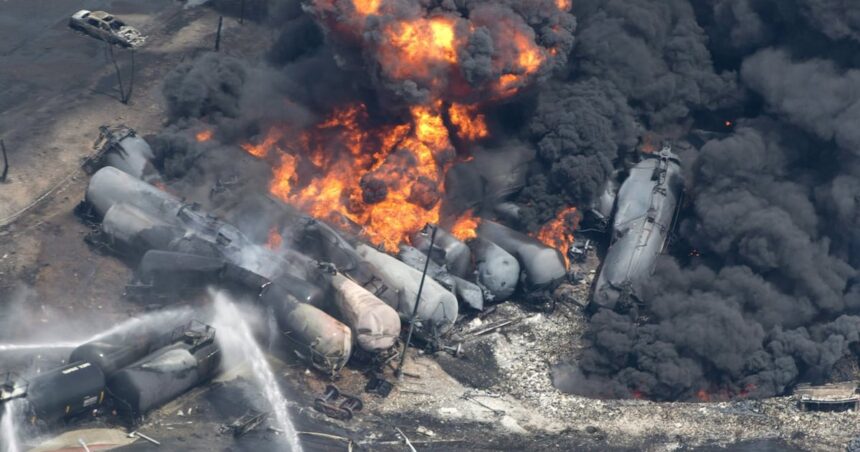As the somber bells toll across Lac-Mégantic today, marking 12 years since Canada’s deadliest rail disaster claimed 47 lives, safety advocates and residents alike share a growing frustration over the pace of meaningful change in rail safety regulations. The anniversary comes amid troubling statistics showing a 23% increase in rail incidents involving dangerous goods over the past year.
“Twelve years later, and we’re still waiting for the comprehensive safety overhauls that were promised in the aftermath,” says Anne Leblanc, whose sister perished in the 2013 tragedy when a runaway oil train derailed and exploded in the heart of the Quebec town. “Each anniversary feels like reopening a wound that never fully heals, especially when we see similar risks persisting across the country.”
Transport Canada data released last month reveals that despite enhanced inspection protocols established after the disaster, compliance issues remain widespread across Canada’s rail network. The federal regulator documented 187 safety violations related to dangerous goods transport in the past fiscal year, primarily involving inadequate brake testing procedures and improper securement of rail cars – the very issues that contributed to the Lac-Mégantic catastrophe.
Rail safety expert Martin Tremblay, who served on the Transportation Safety Board’s investigation team following the 2013 disaster, points to ongoing challenges. “The implementation of automated train control systems has been unnecessarily delayed across major rail corridors,” he told CO24 News. “Transport Canada continues to allow the industry too much self-regulation when it comes to critical safety systems.”
The federal government had pledged to phase out the older DOT-111 tank cars that ruptured during the Lac-Mégantic disaster by 2025, but industry reports indicate approximately 8,700 of these cars remain in service across North America. While no longer permitted to carry crude oil, they continue to transport other hazardous materials through populated areas.
In Lac-Mégantic itself, the long-promised rail bypass that would reroute dangerous cargo away from the town center has faced repeated delays and budget increases. Originally slated for completion by 2022, current projections now target 2027 – a timeline many locals view with skepticism.
“We’ve seen the project budget balloon from $133 million to over $900 million,” notes Mayor Julie Morin. “While we appreciate the complexity, every delay represents continued risk for our community that has already paid the ultimate price for rail safety negligence.”
The anniversary commemorations in Lac-Mégantic featured a morning memorial service and the unveiling of a new section of the town’s memorial walking path. Many attendees expressed mixed emotions about the rebuilt downtown core, which stands as both a testament to resilience and a reminder of what was lost.
Canadian Pacific Kansas City (CPKC), which acquired the Central Maine and Quebec Railway that operated the line through Lac-Mégantic following the disaster, issued a statement reaffirming its “unwavering commitment to the highest safety standards” while acknowledging the industry must continue to evolve its practices.
Rail safety advocacy groups are using this anniversary to push for accelerated implementation of the Railway Safety Act amendments currently before Parliament. The proposed legislation would strengthen Transport Canada’s enforcement powers and mandate more rigorous risk assessment procedures for routes carrying dangerous goods through urban centers, according to CO24 Politics.
“The experience at Lac-Mégantic fundamentally changed how Canadians view rail safety,” says Robert Aubin, executive director of Safe Rails Canada. “But translating that awareness into effective regulatory reform has proven frustratingly slow. We need decisive action, not more consultations and studies.”
As darkness falls on Lac-Mégantic tonight, residents will gather for a candlelight vigil, illuminating the memorial site with 47 flames – one for each life lost. The question hanging over the proceedings, and indeed over Canada’s entire rail network, remains troublingly persistent: How many more anniversaries will pass before the lessons of this tragedy are fully implemented into our rail safety system?

























